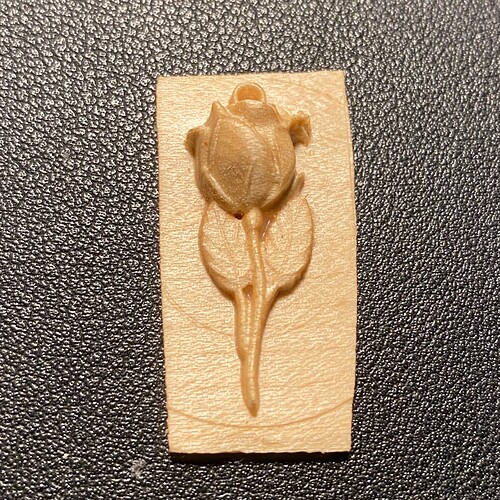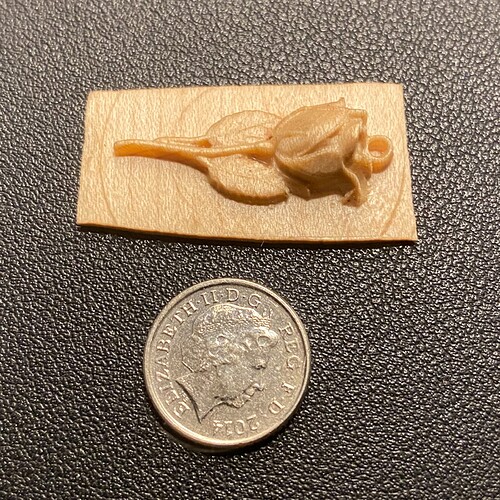I wanted to say thank you to a person (my Hungarian language partner) who has helped me to learn Hungarian. I noted that she wore earrings for pierced ears but that she only liked small earrings. I set about milling an STL file of a rose with a loop for the french loop wire to go through. The actual size of the model is 10mm wide by 35mm tall. The image with the coin shows a 5 pence piece from the UK’s coinage. The testing was carried out on American Maple wood.
The major mistake I have identified is that the veins on the leaves could be better defined. The model is only 7mm in height and I need to play with the settings in Carveco Maker to improve the definition of the markings on the leaves. This model is a little small for tabs and so I opted to leave slightly more base material than I need and sand the excess base off by hand. In a production set-up, I would have to find a better solution.
The final model will be created and machined in American walnut. This wood will show up against the lady’s skin colouring and be highly durable as well as accepting a nice finish. Machining time for roughing and finishing was almost two hours. This was owing to my very conservative choice of feed speed and step down to ensure that I did not break the cutters.
Feed speed was 500mm/min and plunge speed was 250mm/min. Step-down was 0.2mm for both cutters and the flat endmill also carried a 40% stepover. Router speed was 10,000 RPM. Cutters were a 1.58mm (1/16") carbide two flute flat ended cutter for roughing. A carbide two flute 4.9 degree angled sides 0.5mm radius ball-ended cutter was used for the finishing cut. Everything was machined faultlessly in gSender, which is an ultra-reliable machine controlling software.
Right side up showing nicely formed petals
Up side down showing the ring for the french loop ear wire.
On its side showing size against 5p English coin
Any and all comments welcome


